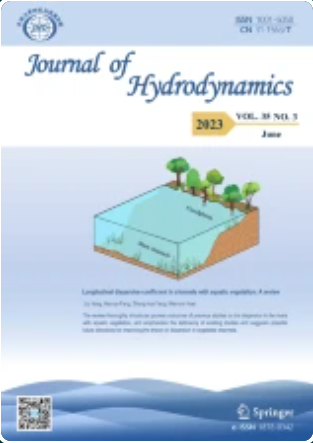Experimental study of the wave–flow characteristics of internal solitary waves with different modes and their hydrodynamic forces on a horizontal cylinder
Abstract
Internal solitary waves (ISWs) in oceans exist independently with different modes. Differences in ISW wave–flow characteristics with different modes create different structural damage mechanisms. In this work, physical simulations of first- and second-mode ISWs and their interactions with horizontal cylinders in the same stratified environment are carried out in the same physical flume. The experimental results reveal that under the same stratified environment and characteristic wave amplitude, the characteristic wave velocity and wavelength of the first-mode ISW are approximately three times greater than those of the second-mode ISW. The horizontal positive velocity and change rate of the first-mode ISW are lower than those of the second-mode ISW, and the horizontal negative corresponding value is greater than that of the second-mode ISW. In comparison, the vertical velocity is lower than that of the second-mode ISW. The first- and second-mode ISW loads increase with increasing characteristic wave amplitude. The maximum horizontal force of the second-mode ISW on the cylinder near the centre of the pycnocline is more significant than that of the first-mode ISW, whereas the vertical force of the former is smaller than that of the latter. The second-mode ISW has the spatial distribution characteristics of the peak value of the first-mode force exerted by the first-mode ISW of the convex and concave types simultaneously. The vertical and density profiles of the horizontal velocity induced by the propagation of different ISW modes in the same fluid environment are different, which leads to changes in the spatial distribution characteristics of the horizontal and vertical forces on the cylinder for different ISW modes. These results improve the understanding of ISW mechanisms with different modes on marine structures.

 求助内容:
求助内容: 应助结果提醒方式:
应助结果提醒方式:


